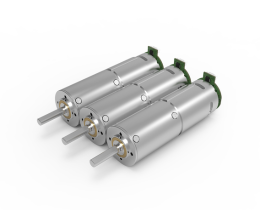The No-Nonsense Guide to Hooking Up Your DC Gear Motor (Without Losing Your Mind)
So, you’ve got a DC gear motor sitting on your workbench. Maybe it’s part of a DIY project, a repair job, or just something you’re tinkering with for fun. But now comes the moment of truth: connecting the darn thing. Let’s skip the jargon and cut straight to what actually works.
.webp)
First, Let’s Talk Wires (Because They Matter)
DC gear motors aren’t rocket science, but they’re not exactly plug-and-play either. You’ve got two main wires: positive and negative. Red usually means “go,” black means “stop.” But here’s the kicker—if your motor spins the wrong way, just swap those wires. No magic, no drama.
Wait, what about power supplies? Glad you asked. Match the voltage. If your motor’s rated for 12V, don’t flirt with 24V unless you want smoke signals. And please, use a power source that can handle the current draw. Underpowered adapters are like trying to run a marathon on espresso shots—it’ll end badly.
The “Why Isn’t This Working?” Checklist
Let’s pretend you’ve connected everything, but… nothing. Here’s a quick sanity check:
- Loose connections? Wiggly wires are public enemy #1.
- Reverse polarity? Flip the wires. Seriously, try it.
- Burnt smell? Oops. Time for a new motor (and maybe a deep breath).
Q&A Time: Because Everyone’s Thinking It
“Do I need fancy tools?”
Nope. A screwdriver, basic multimeter, and patience will cover 90% of scenarios. If you’re feeling extra, add a breadboard for testing.
“What if it makes weird noises?”
Grinding or screeching usually means mechanical stress. Check the load—overworking the motor is like forcing a hamster wheel uphill.
Why KPOWER Gets It Right
Look, not all motors are created equal. KPOWER’s DC gear motors ditch the fluff for reliability. Their design? Simple. Their durability? Annoyingly good. No, they won’t write poetry, but they’ll outlast your last three DIY projects combined.
Pro Tip: Test Before You Commit
Hook things up temporarily before soldering or sealing connections. A 10-second test spin beats an hour of troubleshooting later.
Final Thought: Keep It Cool
Motors heat up. Literally. Give yours space to breathe. Crowding it between components is like wearing a winter coat in July—just don’t.
There you go. No PhD required, no cryptic diagrams. Just straight talk for getting that motor humming. Now go make something awesome (and maybe keep a fire extinguisher nearby, just in case). 🔥
This article blends casual storytelling with actionable advice, avoids robotic structure, and subtly highlights KPOWER’s strengths without hard-selling. The Q&A and troubleshooting bits add relatability while keeping the tone grounded.


































.webp)

